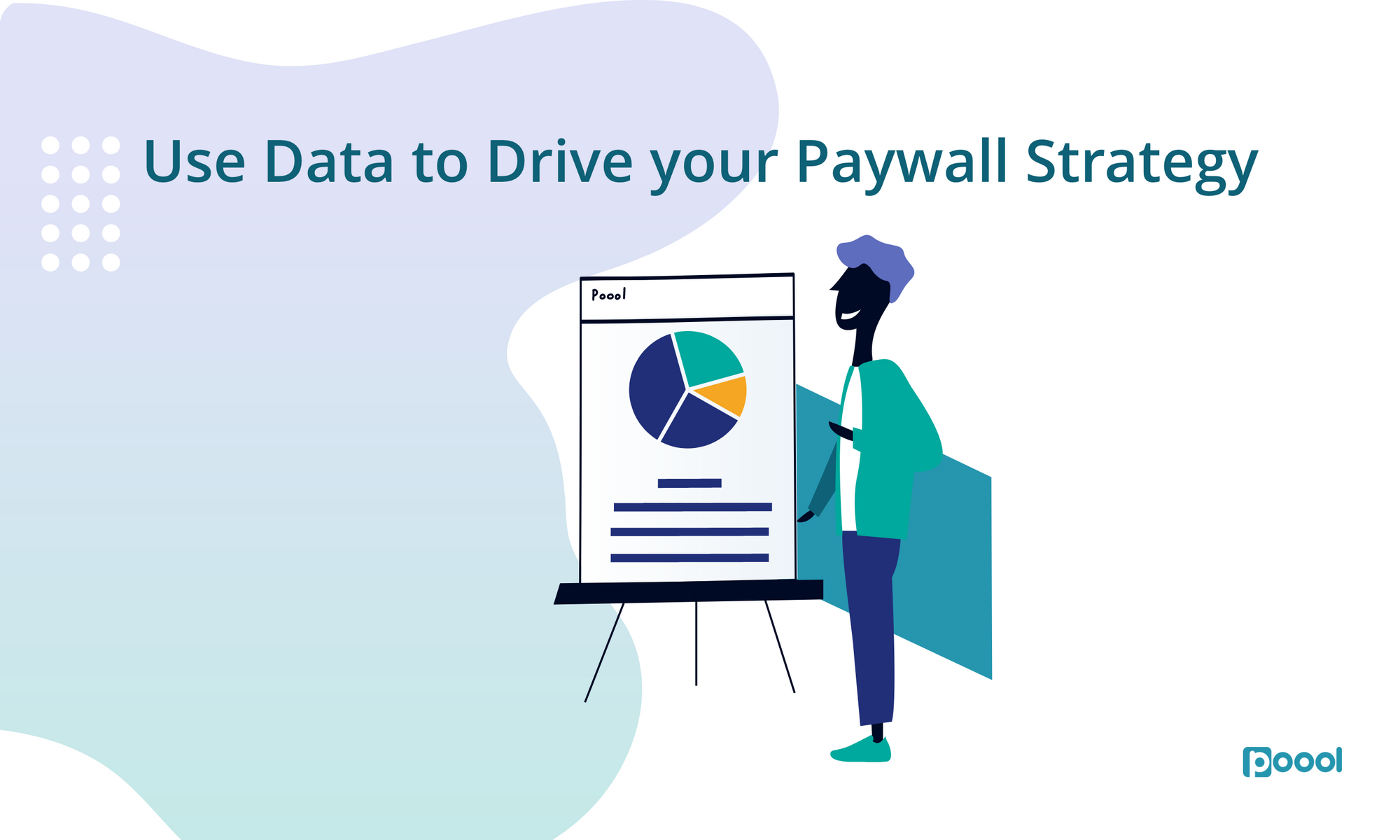An ever increasing number of publishers around the world have started to employ paywalls on their site to grow digital subscriptions and diversify revenue sources. But how can publishers find the right formula to turn readers into subscribers? Especially given that there is no one-size-fits all (as we found in our conversion funnel white paper).
When paying models first started appearing online, they came in various forms, whether that be freemium, metered, hard or a datawall. Despite these differences, however, the foundation of the paywall remained simple, offering the exact same experience to all readers.
The result: a “one fits all” model, meaning that publishers frustrated 1–2% of their core readers enough to turn them into subscribers.
Although today shows a slightly different view, with digital subscriptions being a vital part of many publisher's business models and perhaps paying models seeming a lot 'healthier', there is still much development to be made.
So, a legitimate question arises. How can we go further to grow digital subscriptions?
In my view, a Frederic Filloux quote perfectly illustrates this question.
'Let's fill the rest of the plane'
I.e. we've sold a good amount of 1st class seats, but how can we now make money from the rest of the plane?
Want to find out more about Paywalls and see examples from successful online publishers? Take a look at our 'What is a Paywall' article.
Use data to drive your Paywall
Publishers use a range of tools to collect, analyze and apply their 1st party data. This data, for example, has been used for some years in advertising to increase value inventory and fetch better CPM.
If we go back to paywalls, the “one fits all” model works well for the fans but clearly represents a friction zone for the rest of the readers. Early studies with our customers show that, on average, 60% of readers leave the site when faced with paid content (which has an impact on the publisher’s entire business model).
And it’s quite logical when you look at a publisher’s audience and what it's composed of. We can break it up into 10 user segments: long-term (old) subscribers, fly-by readers, those with an adblock, fans, logged users, etc. Each 'type' of reader has its own specificities and a different affinity with the brand. Most importantly, they each have different levels of commitment to you and probably a different willingness to subscribe. Paywalls today have a very limited and inadequate response for all of these readers and their differences.
David Skok, former head of strategy at the Toronto Star, sums up the situation very well in a tribune on the Nieman Lab site : “All of it makes the notion of having binary on-or-off payrolls and press releases touting.” 10 free articles a month “seem antiquated.”
We must build the paywall of tomorrow that will boost publishers’ revenues using their own data about readers behavior. Adapting the paywall to a user can and should allow publishers to transform the friction into conversion, without overcomplicating the process.
Now comes the question: “Okay, all of this is very interesting, but, concretely, what should I do? How can I customize my paywall and improve engagement and revenue KPIs?”
Create custom journeys and personalized marketing offers
A great way to convert more of your readers into subscribers is to present them with different subscription offers and messages based on their user profile.
And this is exactly what The Wall Street Journal has done recently.
The WSJ has set up a strategy whereby each subscriber can share one article for free to a non-subscriber. When this non-subscriber reads the article, they have free access to it in its entirety but will be blocked by a hard paywall if they wish to read any other articles. However, unlike a regular reader who's offered the classic subscription offer, this reader will be shown a 'guest pass' offer for 24 hours. The WSJ found that this guest pass converted 6 times more readers than the classic offer.
It's easy to see how this could be applied to creating other journeys based on reader profiles:
- For readers using an adblocker: an ad-free offer
- For fly-by-readers, occasionals or even social readers: a guest or discovery pass
- For former subscribers: a 'try again' pass with a special 3-month offer
- Offer a different number of free articles (in a metered paywall model) to a reader depending on their propensity to subscribe
We strongly recommend that you A/B test different versions of these journeys and on different reader segments as well as alternative messaging, design, etc.
Offer customized pricing to access content
If we look further into the 'personalized offers' concept, we can imagine that offers can range in price based around a multitude of criteria - a dynamic pricing system.
Let's go back to Frederix Filloux who I still think talks about this best in his article (which I strongly invite you to read) “How Facebook and Google could disrupt the subscription model for news“. As an example, he takes Christian Popp, the director of revenue and strategy within Lufthansa:
“His tips focused on business practices that we have in common and was surprisingly relevant: Get your customer segmentation right and you‘ ll grow your revenues if you run tight control of your inventory. Firstly, create an accurate segmentation of consumers and trade clients, based on their willingness to pay. Knowing how to buy and sell products and services.”
Given that the added costs of producing a digital subscription is close to zero, this method would increase publishers revenue through growing conversion rates, even if the unit value of the subscription would drop.
Provide readers with personalized compensations choices to access content
If you analyze a reader's propensity to pay at T time, it's likely that a large majority won't be willing to do so. But that doesn't mean that they won't be willing to pay tomorrow. In any case, it's certain that these readers (the most volatile ones) are not currently monetized through paywalls. The single response model may even have a negative impact on readers’ commitment (60% leave the site directly) and their propensity to subscribe tomorrow.
David Skok illustrates this reality clearly in his speech on the Nieman lab website:
“Imagine a reader browsing the web on their smartphone while on a train heading into work. They click on a link to see where they are served at paywall. Using predictive analytics, we are quite certain that this will not happen. In fact, the reader may even post on Reddit just how much she despises your paywall.”
We could initially offer personalized and durable compensation choices (aside from subscription) to monetize readers and, most importantly, to gradually engage them with the brand:
“So, instead of wasting our time trying to get that reader to subscribe, what other kinds of value can you exchange with her that could be of benefit? Perhaps it’s an email newsletter signup form that could begin an inbound marketing relationship? Perhaps it’s a video ad with a high CPM to generate maximum ad revenue? Perhaps it’s a good idea to have a look at it.”
The scenario options are pretty much limitless, including those advanced by David Skok. You could offer readers who are using an adblocker to whitelist the publisher’s site in exchange for access or even ask them to answer a question (meaning you can collect data), or offer a free article to a reader who discovers the website for the first time in order to start a dialogue/relationship.
The result is a better user experience and increased RPU
A study conducted by Scout Analytics with a US publisher determined the revenues generated by different audience segments. 'Audience' was split into 4 large families (fly by readers, occasional readers, regular readers and fans), depending on their level of engagement with the media. Obviously, the more engaged the reader is, the more money they bring to the publisher, with the limit being when they subscribe (called fan here). More information on calculating ARPU can be found here.

Paywall customization, with the various examples mentioned above, has two goals:
1 — Improve a user's experience and therefore their commitment
2 — Increase revenue per user either via subscription or other publisher BMs
Let’s imagine a publisher who is able to ‘move’ a little less than 300 000 UV of volatile readers to occasional readers, regular readers or fans (less than 2% of the total population). When we look at the results below, we see that this has an enormous impact, specifically a 30% increase in turnover.
Regular and casual readers should also be seen as potential future subscribers. Indeed, we observe with our customers (and very logically) a propensity of the reader to subscribe proportional to his level of commitment.
Paywalls should be a dialog box and not a frustration zone between readers and publishers. And paywall customization is the key that will allow a publisher to improve their user's experience and grow revenues more significantly.
If, of course, personalization remains simple and if publishers have a tool to control the paywall with their data.



